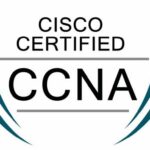 Prepare for the Cisco Certified Network Associate (CCNA) certification with this essential recorded session on IPv4 and IPv6 Addressing. In this 45-minute video, we cover everything you need to master IP addressing—a key component of the CCNA exam and a critical skill for any networking professional.
Prepare for the Cisco Certified Network Associate (CCNA) certification with this essential recorded session on IPv4 and IPv6 Addressing. In this 45-minute video, we cover everything you need to master IP addressing—a key component of the CCNA exam and a critical skill for any networking professional.
Understanding IPv4 and IPv6 Addressing
Reserve Your Spot
Complete the form below to register for this webinar
Frequently Asked Questions
- CCNA aspirants looking to strengthen their understanding of IP addressing.
- Networking professionals seeking to update their knowledge on IPv4 and IPv6.
- Anyone interested in mastering one of the most critical aspects of networking.
Introduction
- Welcome and Overview
- Brief introduction of the presenter.
- Overview of the webinar objectives.
- Importance of understanding IPv4 and IPv6 for the CCNA certification.
Part 1: Basics of IPv4 Addressing
- What is IPv4?
- Definition and importance in networking.
- Structure of an IPv4 address (32-bit address).
- IPv4 Address Classes and Ranges
- Classes A, B, C, D, and E.
- Public vs. Private IP Addresses (RFC 1918).
- Subnetting in IPv4
- Understanding Subnet Mask and CIDR Notation.
- VLSM (Variable Length Subnet Mask) and its importance.
- IPv4 Address Exhaustion and Limitations
- The problem of limited address space.
- Introduction to the need for IPv6.
Part 2: Introduction to IPv6 Addressing
- What is IPv6?
- Definition and necessity.
- Structure of an IPv6 address (128-bit address).
- IPv6 Address Types and Ranges
- Unicast, Multicast, and Anycast Addresses.
- Global Unicast, Link-Local, Unique Local, and Special Addresses.
- Simplified Address Representation
- Address abbreviation rules.
- Examples of abbreviated vs. full IPv6 addresses.
Part 3: Comparing IPv4 and IPv6
- Key Differences Between IPv4 and IPv6
- Address Length, Format, and Header Structure.
- Changes in Addressing and Subnetting.
- Improved Features in IPv6
- Auto-configuration (SLAAC), Enhanced Security (IPSec), No Need for NAT.
- Mobility and Scalability Improvements.
- Coexistence and Transition Mechanisms
- Dual Stack, Tunneling (6to4, Teredo), and Translation (NAT64).
Part 4: Practical Applications and Examples
- Configuring IPv4 and IPv6 Addresses on Cisco Routers and Switches
- Step-by-step configuration examples.
- Common commands and best practices.
- Troubleshooting IPv4 and IPv6 Networks
- Ping, Traceroute, and other diagnostic tools.
- Common issues and how to resolve them.
Conclusion and Q&A
- Recap of Key Points
- Summary of IPv4 and IPv6 addressing differences and importance.
- Next Steps for CCNA Candidates
- Suggested study resources and practice labs.
- Encouragement to explore more hands-on configuration and troubleshooting.
- Q&A Session
- Open the floor for questions from attendees.
- Address the most common questions or challenges faced by students.


